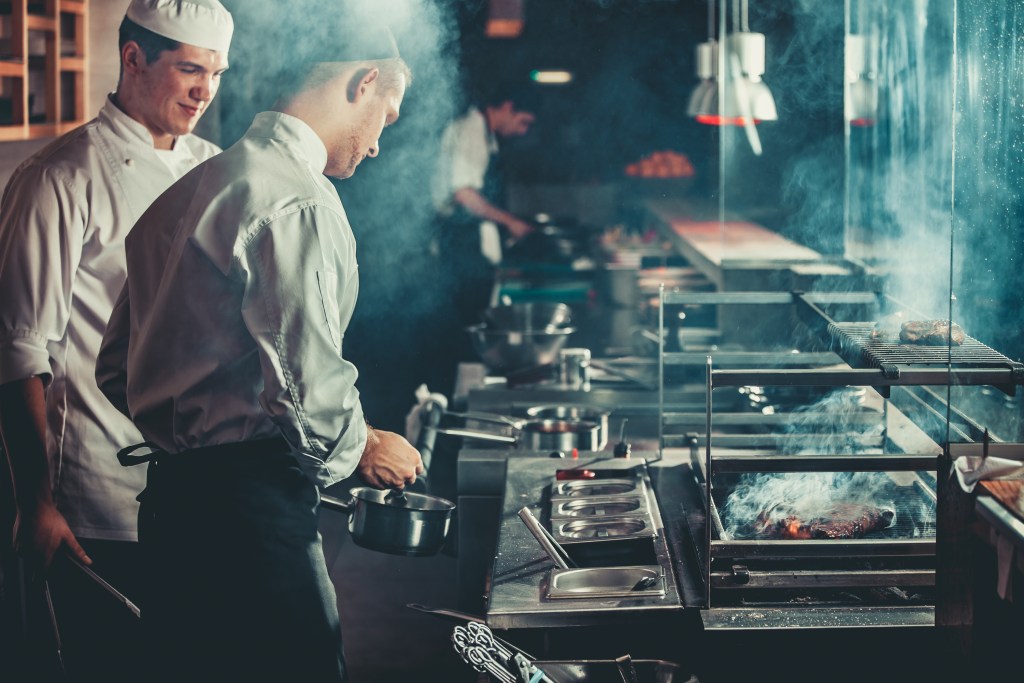If you’re looking to start a restaurant, you’re going to need a floor plan. Opening any business begins with a series of steps. Even if you’re not renovating or converting a space into a restaurant, you’ll still need to follow these steps.
- Draft a business plan
- Source a venue location
- Develop a concept
- Plan out floor space
- Design the interior
Each of these steps may vary depending on how you found your restaurant. You may build from the ground up, renovate a space, or convert a property. Whatever path leads to opening day, you can’t get there without a solid floor plan.
Floorplanning is a critical step in taking your restaurant and/or culinary concept to fruition. Even if you source furnishings and accessories before drafting a layout, you’ll still need to plan the floor out for every room in your establishment. Read on to discover top tips for planning your restaurant’s layout.
What is a restaurant floor plan?
A restaurant floor plan uses blueprints, precise measurements, and elements of interior design. It actualizes your vision and makes sure your new eatery is up to code. When drafting a floor plan, you’ll need to consider a few key things.
- What square footage and space are you working with for comfortable movement and seating?
- Where do you want to leave the most space for guests: dining, bar, outdoors?
- How accessible is each area of your restaurant?
- Will there be a bar, and will it be full or partial?
These help you consider the customer perspective and not get caught up in the ambiance or lose the practicality. Some business leaders are too visionary, on rare occasions overlooking consumer needs (and wants). A customer-centered dining space accommodates many things.
Guests need a space to wait before seating. Your staff needs somewhere to catch their breath and take breaks. Depending on how food flows in and out of your kitchen, you may also need a dedicated delivery area. Separating delivery from dining prevents overflow issues and more.
Accommodating guests also ensure you meet accessibility standards. Hopefully, you’re meeting these for more than federal mandates. Make sure you consider what staff and customers have to walk through to get to certain areas of the establishment, too.
Designing your restaurant floor plan
Keeping these best practices in mind, you’ll find the value in further planning out each area of your restaurant with care. With so many spaces to plan, it can be easy to neglect crucial details. Keep reading for further tips on specific floor plans within your restaurant.

Kitchen
Potentially the most important part of your restaurant and the most problematic, you must take special care with this space. Make sure staff have plenty of room to cook, especially based on your establishment’s cuisine and dining experience. Paying little attention here can cause more than long-term code violation issues.

Dining room
Dining rooms vary in importance based on their size and the desired ambiance of your dining concept. If you want fast food, you won’t need a large dining area. See the varied sizes of dining areas below:
- Fine Dining: 18-20 square feet
- Full-Service Restaurant Dining: 12-15 square feet
- Counter Service: 18-20 square feet
- Fast Food: 11-14 square feet
- Banquet: 10-11 square feet
Backroom
How easily can staff find stock items that belong in the kitchen? Consider the time it takes for staff to wander to the back (and who they pass by to get there). If employees meander through the kitchen to take breaks, there may be a better route.
Make sure your backroom isn’t also the office, file storage room, and so on. Dedicated space for breaks is critical to employee productivity. It also ensures you took the time to plan out an on-site office for yourself and senior staff.
Payment systems
Where you choose to place points of sale says a lot about your restaurant. If customers walk in and are immediately greeted by a hostess stand and POS system, it says something. Unless you’re all about profit and getting customers out as soon as they pay, you’ll want your POS elsewhere.
Thinking about these things ahead of time also ensures staff won’t be stuck in a corner swiping cards and cashing out tips. And payment systems need to be somewhere secure, especially if you use cash registers.

Outdoor seating
Depending on your business’s location, you may want to prioritize indoor or outdoor dining. If you experience pleasant weather year-round, this may be your dedicated dining area. Otherwise, you may want convertible outdoor seating options.
Entrance and exits
Planning entrances and exits are as much about flow as it is safety. Your restaurant floor plan requires these legally, but your customers’ experience is shaped by these spaces, too. Make sure you don’t neglect the flow of these spaces so customers feel welcome and unrushed.
Plan it out well in advance
With so many factors to consider for your restaurant, it’s clear your floorplanning won’t happen overnight. Even if you hire a pro to help you design the space, you’ll find there are still plenty of obstacles. Ensuring you stay on-brand with concept and county codes is a hard task.
Taking the time to prep will prevent future renovations’ necessity. Your interior design should be simpler, too, since you’ll already be clear and confident about the kind of dining experience you want for your customers.


